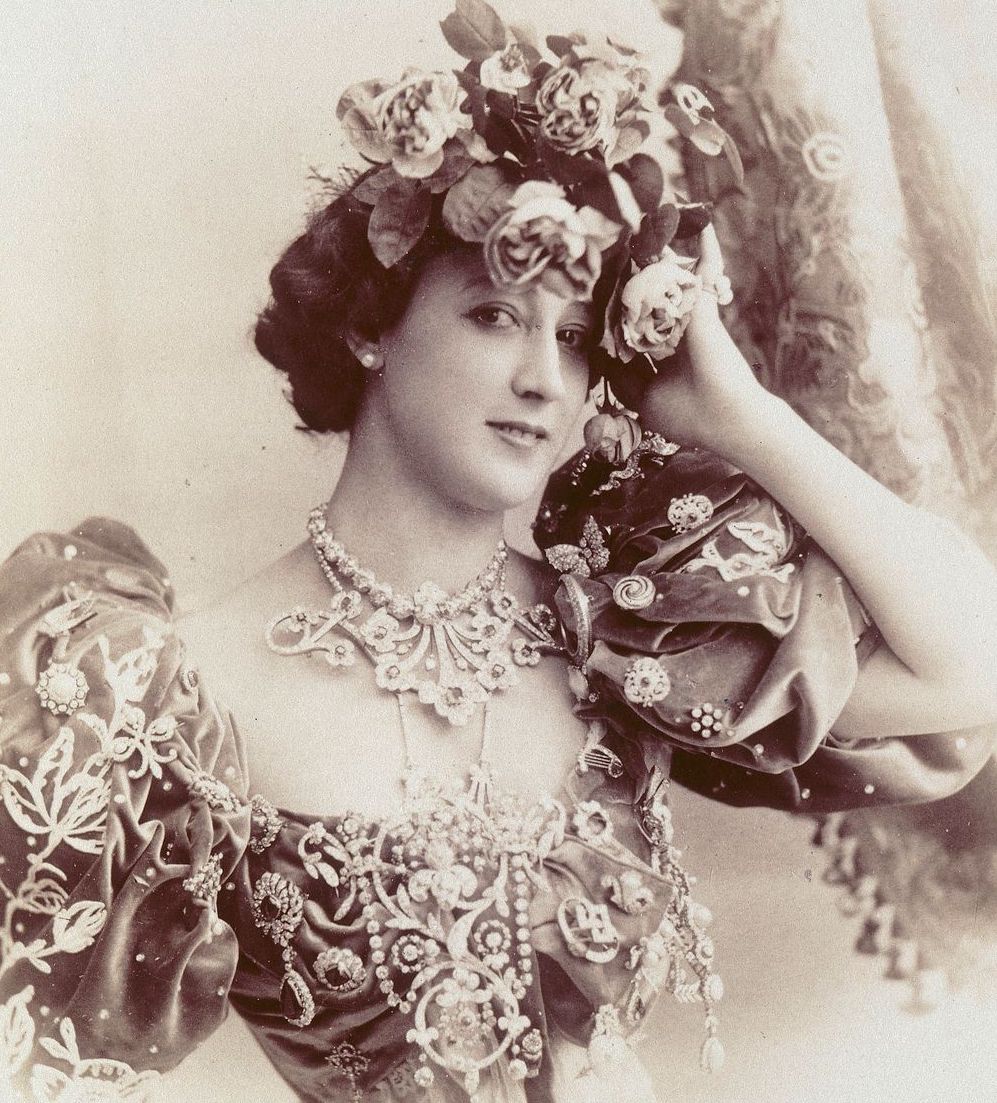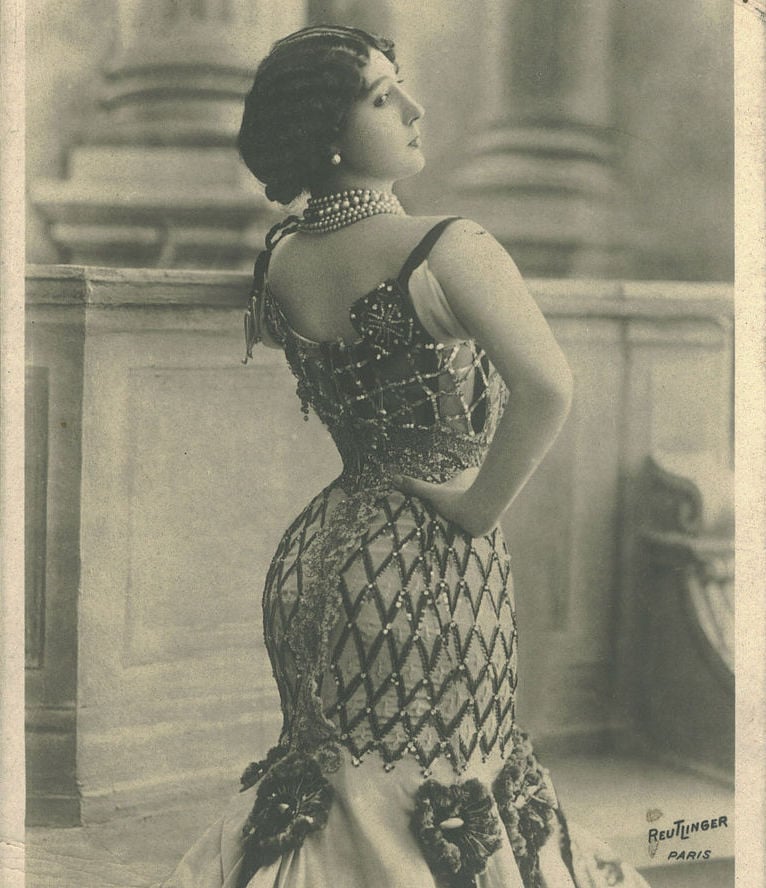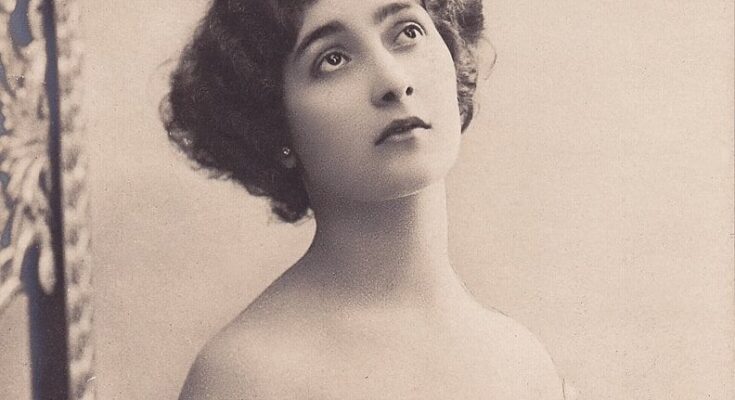Agustina del Carmen Otero Iglesias, known as “La Belle Otero,” was said to be the most beautiful woman of the Belle Epoque—so beautiful, in fact, that men dueled and died over her. The actress, dancer, model, and courtesan was one of the most famous figures of the period.
Born of a Spanish mother and a Greek Army officer father in Valga, Spain in 1868, Otero came from an impoverished background. Soon after her birth, her father abandoned the family, leaving her mother to raise her alone.
The family was so poor that, as a child, Otero was forced to leave the home to work as a maid for a wealthy family in Santiago de Compostela. Tragically, she was raped at the age of ten while working for the family and suffered abuse and exploitation throughout much of her time there.
At the age of fourteen, Otero fled the home with her boyfriend, and later dancing partner, named Paco. They went to Lisbon, Portugal, where Otero began her career as a dancer and singer.
Extraordinarily beautiful, Otero was the epitome of beauty at the time, with mesmerizing large, dark eyes, pale skin, rich brown hair, and classic features.

Greek-Spanish beauty La Belle Otero enchants Europe
Otero soon became one of the most popular entertainers in Portugal and Spain, both for her looks and her incredible talent as a dancer.
While living and working in Barcelona, the twenty-year-old Otero found a sponsor named Ernest Jurgens who provided her with the funds to move to Marseille and promote her career as a singer and dancer in France.
While there, Otero created the character “La Belle Otero,” who she fashioned as a mysterious gypsy from Andalucia, southern Spain.
In addition to Otero’s great beauty, she was also known to be very witty, curious, and intelligent, making her a popular figure amongst high society in France.
Her mysterious beauty and charming personality embodied the ultimate standards of the Belle Epoque, a period of economic prosperity, peace, discovery, progress, and art in France that flourished from the 1870s until the First World War.

Her beauty and dancing talent made her a star of the famed caberet Folies Bergere in Paris, where she donned incredibly ornate and revealing costumes that put her voluptuous figure on full display.
Famously, her prodigious bosom was said to be the model and inspiration for the twin cupolas of the Carlton Hotel in Cannes, which was built in 1912.
Otero was the epitome of beauty during Belle Epoque
Along with her position as a dancer and entertainer, Otero was also a courtesan to the rich and powerful of Europe. Known internationally for her beauty and wit, the Greek-Spanish beauty was considered one of the most sought-after women in Europe.
She is said to be associated with some of the most prominent figures in Europe, including Kaiser Wilhelim II, Prince Albert I of Monaco, King Edward VII, and many other royals and thinkers of the day.

Her many lovers were the topic of much discussion, and legends formed surrounding Otero’s amorous affairs. It was said that six men killed themselves when their affairs with her ended. Although likely a myth, it is confirmed that two men did indeed duel over La Belle Otero.
Always at the cutting edge, Otero also starred in several early films. Famously, the beauty was filmed in St. Petersburg dancing the famous “Valse Brillante” by an employee of the Lumiere company, who were some of the earliest filmmakers in history.
The one-minute film was screened in Russia and caused great controversy, as an officer of the Tsar’s army appeared in the scene, which was considered unbecoming for a military man.
The great beauty, born into an impoverished family, became fantastically wealthy by the time she retired after World War I. Using the wealth she accumulated as a dancer and courtesan, Otero purchased a mansion worth the equivalent of $15 million.
Yet, somehow she managed to lose nearly all of it in casinos and nightclubs, and by the time she died at the age of 97 in 1965, Otero had hardly any earthly possessions aside from her memories of the Belle Epoque.
She passed away of a heart attack in her one-room apartment in Nice, France.
Reflecting on her life as an older woman, Otero stated that “Women have one mission in life: to be beautiful. When one gets old, one must learn how to break mirrors. I am very gently expecting to die.”



